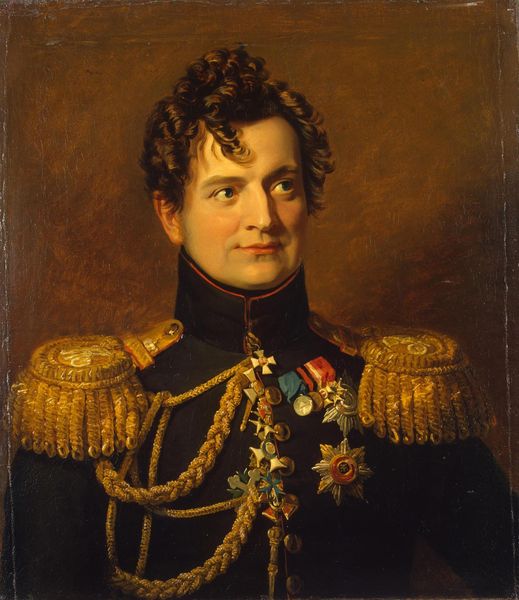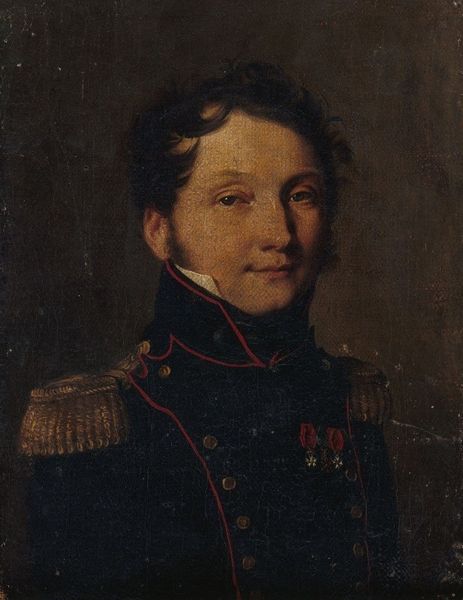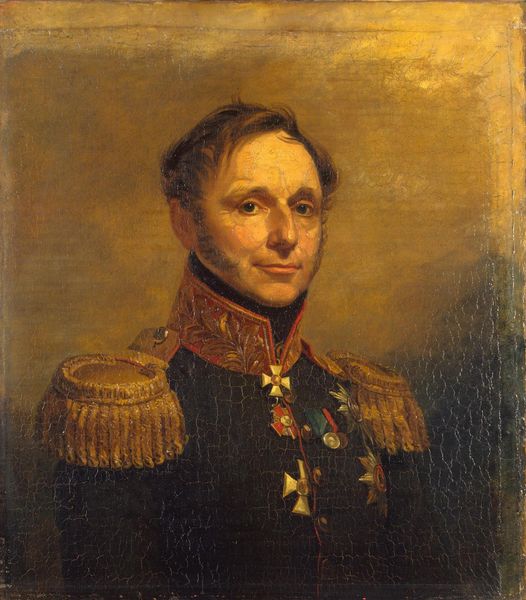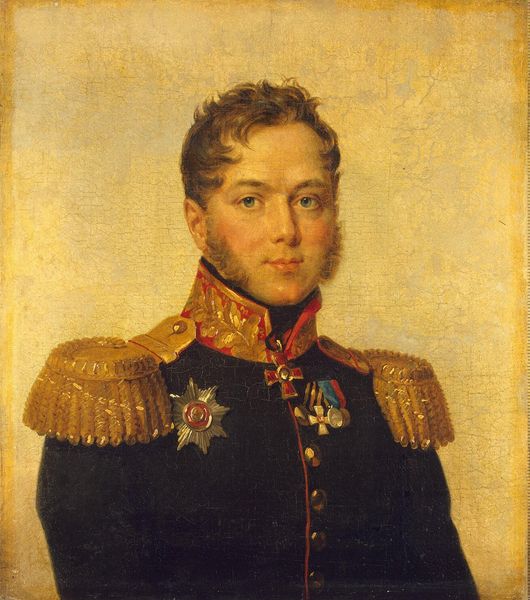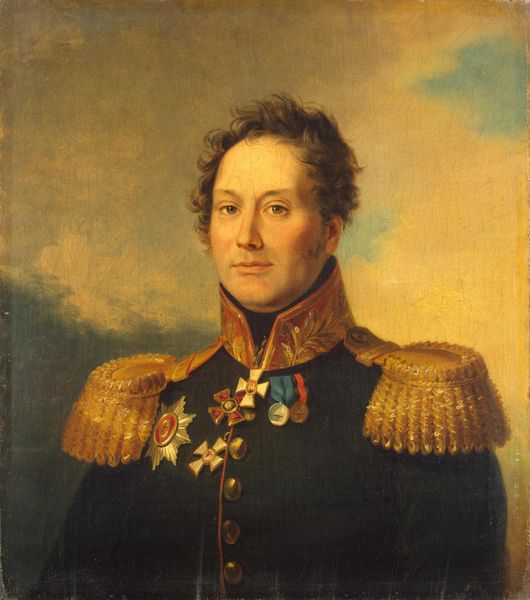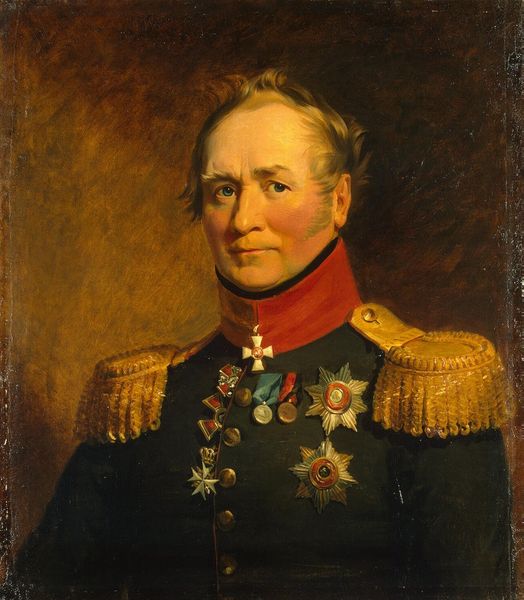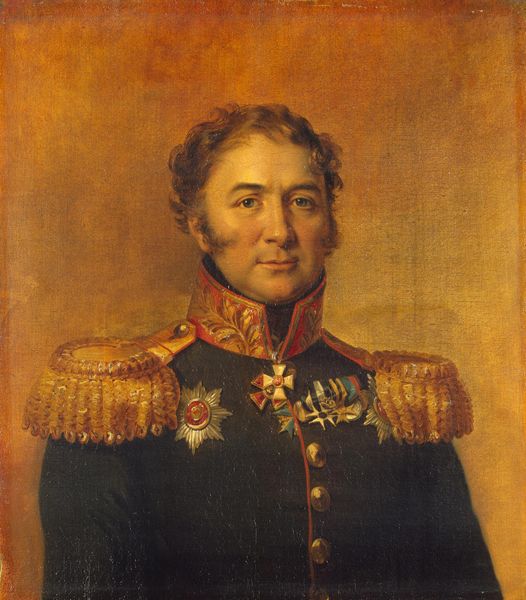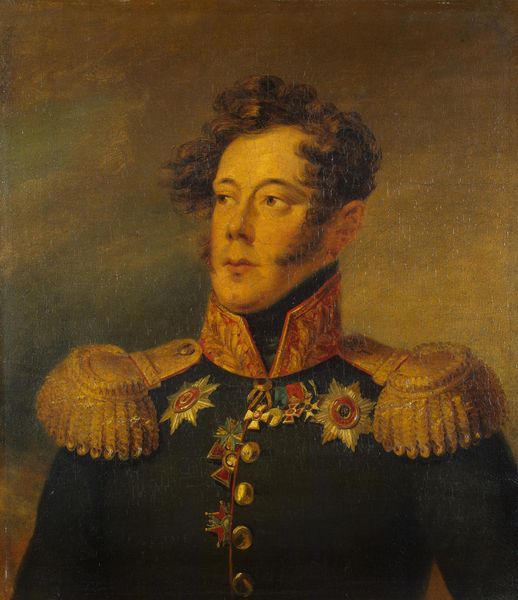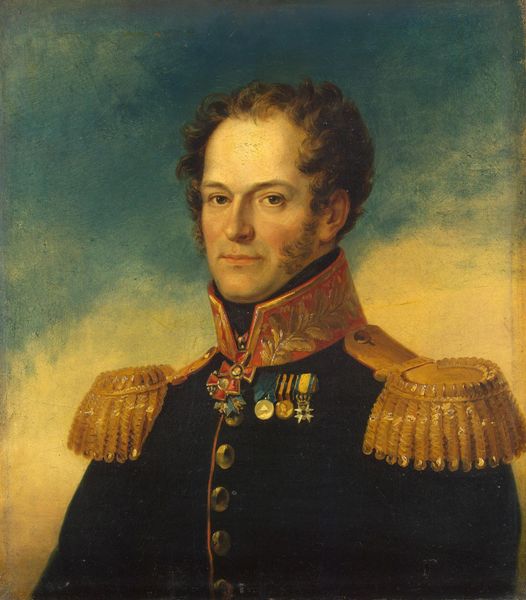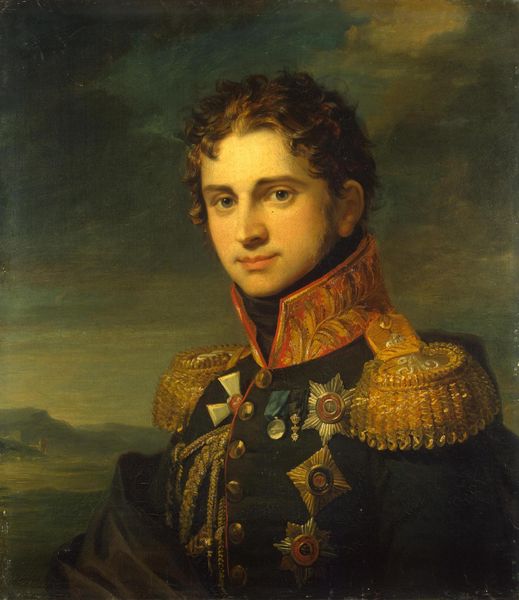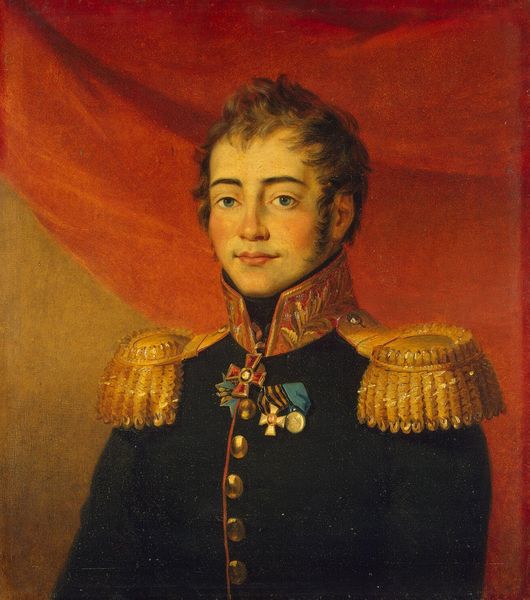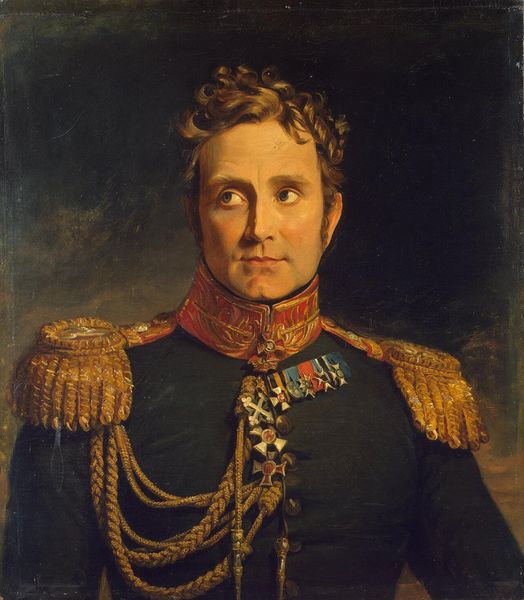
oil-paint
#
portrait
#
oil-paint
#
oil painting
#
romanticism
#
history-painting
Copyright: Public domain
Curator: This portrait is of Fyodor Vasilyevich Drizen, a Russian General, captured in oil on canvas. The artist is George Dawe. Editor: My first impression is one of studied formality; a very contained presence. The composition feels quite rigid. Curator: And perhaps intentionally so. We have to understand this in the context of early 19th-century Russia, following the Napoleonic Wars. Drizen, a decorated General, would have wanted to project strength, loyalty, and the might of the Imperial Army. These portraits served as powerful propaganda. Editor: From a strictly visual perspective, the use of chiaroscuro around his face is subtle but effective, drawing the eye to his gaze, but it's offset by the flattening effect of the dark coat against the dark background. This visual strategy renders the work static. Curator: Absolutely. The medals, stars, and ornate epaulettes act as symbols of Drizen’s position and status. These were rewards for service and signified his loyalty to the crown, which reinforced the Tsarist regime. The formal style acted as a mirror to a very hierarchical society. Editor: The artist’s focus seems to have been dedicated to rendering textures meticulously. The braiding, the gold, even the individual curls of Drizen's hair appear rendered individually. He successfully employs detail as a means of creating structure in a very subtle, yet striking way. Curator: Interestingly, there's a subtle romanticism in his gaze, perhaps reflecting a shift in cultural attitudes towards individual heroism versus the impersonal forces of the state. This is not merely about portraying a military figure, but attempting to capture an aspect of individual character within constraints. Editor: I appreciate how the formal precision actually highlights a contained personality—the slight asymmetry of his features or the almost quizzical look in his eyes is engaging. I agree that Dawe offers us the rigidity, and somehow subtly undermines it, too. Curator: Ultimately, Dawe's portrait provides insight not only into the man, but into the political and social environment he inhabited, a system that demanded performance of identity through highly codified visual symbols. Editor: A study in structure, restraint and detail. Thank you, I'm off to think more about how surface can reveal structure and its opposite.
Comments
No comments
Be the first to comment and join the conversation on the ultimate creative platform.
